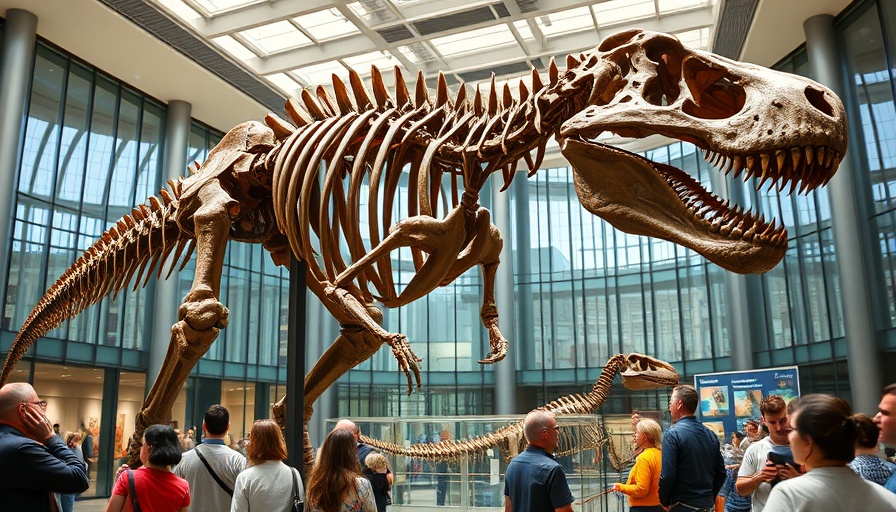
A Significant Leap for Cal Academy Workers
The California Academy of Sciences (Cal Academy) has recently celebrated a monumental achievement as its employees ratified their first union contract. After engaging in three years of organizing efforts and finally forming a union in July 2023, approximately 350 workers overwhelmingly supported this contract by an impressive 87% vote. The agreement marks a pivotal moment in the labor landscape, ensuring better wages, protections, and inclusivity for those involved.
Details of the New Contract
The newly approved contract introduces significant wage increases for the workers, raising the minimum hourly wage from $20.25 to $25 by July 2026, with subsequent raises between 8% and 35% planned over the next three years. Understanding the need for work-life balance, the contract also provides an extra five days of paid vacation for museum employees who have worked less than two years. This commitment reflects a growing recognition of workers' rights and the importance of retention in an industry affected by financial instability.
A Union’s Rise Amidst Adversity
The path to this contract was not easy. Cal Academy Workers United, affiliated with the Service Employees International Union (SEIU) 1021, faced challenges from the outset, including management's refusal to recognize the union voluntarily. This led to a union vote that affirmed their commitment to organizing. During negotiations, controversy arose when a youth climate program supporting the workers faced unexpected backlash, resulting in the termination of all involved participants. Despite the museum's assertion that the program closure was unrelated to retaliation, this incident drew attention to the museum's relationship with the community.
Implications for the Future
With financial concerns looming over the Cal Academy, which admitted to facing potential multi-million dollar shortfalls, this ratified contract will require both management and employees to work collaboratively to ensure sustainability. The strategic end date of April 30, 2028, was designed to align with the expiration of several significant union contracts nationwide, including an anticipated public push for a general strike led by the United Auto Workers.
Pushing for Inclusivity and Representation
Beyond wage increases, the contract creates a framework aiming to promote inclusivity. Aristocrat Holly Rosenblum emphasized the contract’s role in shaping how communities interact with science, advocating for diversity in science access beyond traditional demographics. Provisions are also in place to minimize reliance on unpaid internships while promising more educational opportunities that address the effects of colonialism within scientific disciplines.
The Broader San Francisco Labor Landscape
This contract ratification resonates not only within the walls of the Cal Academy but across the Bay Area, presenting a model for labor negotiations amidst increasing socioeconomic pressures. California has seen a marked rise in union organizing efforts, with workers advocating for fair pay and robust employment conditions post-COVID. As cultural institutions strive to recover financially, workers’ unions are proving essential in negotiating for rights that reflect the evolving landscape of labor in the arts and education sectors.
What This Means for Local Communities
For the San Francisco community, this development signals the importance of supporting cultural institutions that recognize and uphold fair labor practices. It highlights broader themes of community engagement, representation in science, and the need for sustainable models in the workforce. For many parents and young adults, understanding these dynamics is crucial—especially in a region where income disparities and employment conditions heavily impact quality of life.
As residents and observers of San Francisco navigate this changing environment, engaging with local news about community developments and labor relations will equip them to participate actively in shaping a future that prioritizes not just economic strength but equitable treatment for all workers.
By staying informed about neighborhood dynamics and the efforts of local unions, San Francisco residents can contribute to a more vibrant, inclusive community. Advocacy and awareness are essential as we continue to witness transformations in labor rights that directly affect our lives and the cultural heritage of our city.
 Add Row
Add Row  Add
Add 




 Add Row
Add Row  Add
Add 

Write A Comment